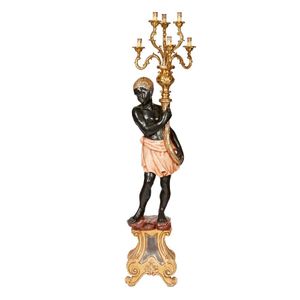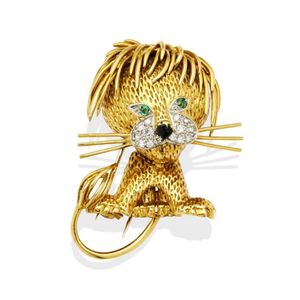Van Cleef & Arpels Cat Brooch with Gemstones
You must be a subscriber, and be logged in to view price and dealer details.
Subscribe Now to view actual auction price for this item
When you subscribe, you have the option of setting the currency in which to display prices to $Au, $US, $NZ or Stg.
- Cabochon Cut in Jewellery - A cabochon cut is a type of gemstone cutting where the stone is cut and polished in a convex shape with a flat bottom and a domed top, with no facets. This type of cut is typically used for opaque or translucent stones that have natural patterns or inclusions that are best displayed in this type of cut. Examples of stones that are often cut as cabochons include turquoise, opal, and moonstone.
- Onyx - Onyx is a form of agate, used from antiquity and popular again in the 1920s and 30s. European onyx is generally green, but can be many other colours, and can contain bands of black and/or white.
This multicoloured stone is widely used for table tops, lamp bases and in jewellery. Some types of onyx are also used for cameos of which the upper white layer is cut away to reveal the colour beneath. - Circa - A Latin term meaning 'about', often used in the antique trade to give an approximate date for the piece, usually considered to be five years on either side of the circa year. Thus, circa 1900 means the piece was made about 1900, probably between 1895 and 1905. The expression is sometimes abbreviated to c.1900.
- Emeralds - Emeralds have been used in jewellery making for thousands of years, and are prized for their deep green colour, which is caused by the presence of chromium and vanadium in the mineral beryl. Because of their rare colour, emeralds are often more valuable than diamonds of a similar size and quality. In jewellery making, emeralds are typically cut into round or oval shapes to maximize their color and clarity. They are often set in gold or platinum and used as the centrepiece of a piece of jewellery, such as a ring or necklace. They can also be used in combination with other gems, such as diamonds, to create intricate and beautiful designs.
This item has been included into following indexes:
-
brooches, diamond
- diamond and emeralds 204
- diamond and onyx 43
- diamond and ruby 419
- brooches, gold - gold with rubies 650
- Van Cleef & Arpels (France) - brooches, designers 35
Visually similar items

18ct gold and gem-set 'Lion Ebouriffe' brooch, Van Cleef & Arpels, circa 1962, modelled as a seated lion highlighted with circular-cut emerald eyes, a black enamel nose and mane pave-set with circular-cut diamonds, approximately 50 x 35 mm, signed VCA for

A 20th century polychrome and gilded blackamoor standing torchere, Depicted wearing a cloth holding aloft a six branch candelabra on a faux marble and pedestal base in resin, 171 cm height

A diamond, emerald and enamel 'Lion Ebouriffe' clip brooch, van Cleef & Arpels, circa 1965. A textured, whimsical lion with emerald eyes, diamond muzzle, and black enamel nose. 18ct yellow gold. Weight 20.3 grams. Length 48 mm. Signed van Cleef & Arpels, n

A parcel-gilt silver figure of seated Padmasambhava, 15.3 cm high. Provenance: Western Australia private collection, acquired in Peking in the 1970s, hence by descent (by repute)
